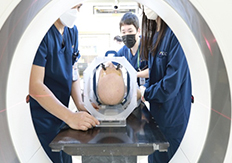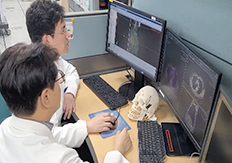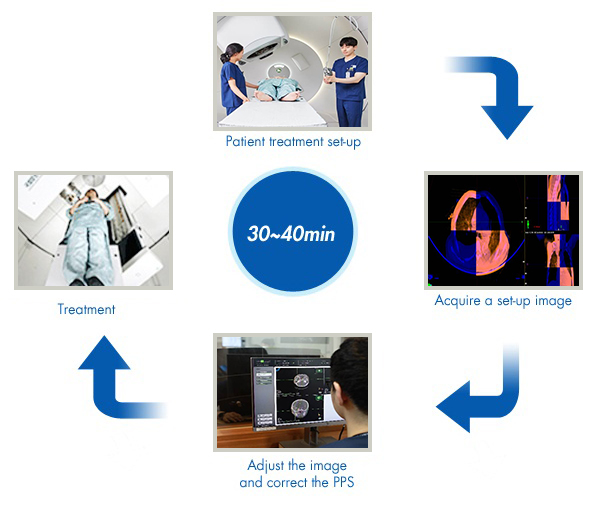Proton therapy process
- Home
- Proton Therapy Center
- Proton therapy
Initial consultation
-
During your first visit, a radiation oncologist will explain the treatment process. The oncologist will also perform a physical exam to assess the extent of your disease and your general physical condition.
Simulation and imaging
-
The patient is positioned in a patient-specific immobilization device to ensure the patient is placed in the same position in each treatment session. The patients then undergo computed tomography and/or magnetic resonance imaging to create a 3D reconstruction of the tumor and of the surrounding normal structures for proton therapy planning.
Proton therapy planning
-
A physicist and a dosimetrist work together to prepare the treatment plan. The plan is then reviewed by a physician and subjected to quality assurance before finalization and implementation.
Creating the aperture and compensator
-
During treatment, the proton beam must be “shaped,” in terms of its width and depth. This is done by making patient-specific apertures and compensators. The aperture shapes the proton beam to the exact contours of the tumor. The precise depth of treatment is controlled using a patient-specific compensator, a 3D focusing lens. After making these high-precision parts, we verify the suitability of the treatment plan.
Daily treatment
-
Patients wear a hospital gown during each treatment. After entering the treatment room, the radiation therapist places the patient in the patient-specific immobilization device using marks derived from the initial images of the prostate and tumor. After positioning the patient on the treatment coach, the position is verified by a digital image positioning system to deliver the prescribed radiation dose to the tumor. After setting up equipment, the proton dose is delivered to the patient within 5 minutes. The total time required for each treatment is about 30-40 minutes. Patients must not move during treatment.
After treatment
-
After completing the treatment course, the National Cancer Center provides each patient with a complete record of the treatment received and a referral report to assist follow-up monitoring once the patient returns home.












